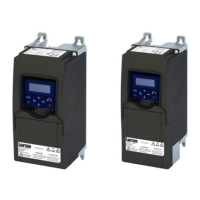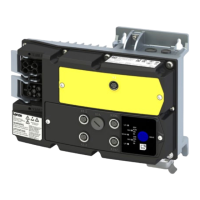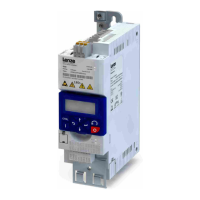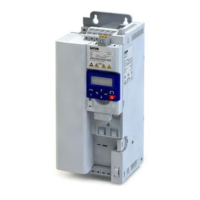2.2 Residual hazards
The user must take the residual hazards menoned into consideraon in the risk assessment
for his/her machine/system.
If the above is disregarded, this can lead to severe injuries to persons and damage to material
assets!
Product
Observe the warning labels on the product!
Icon Descripon
Electrostac sensive devices:
Before working on the product, the sta must ensure to be free of electrostac charge!
Dangerous electrical voltage
Before working on the product, check if no voltage is applied to the power terminals!
Aer mains disconnecon, the power terminals carry the hazardous electrical voltage given on the product!
High leakage current:
Carry out xed installaon and PE connecon in compliance with EN 61800−5−1 or EN 60204−1!
Hot surface:
Use personal protecve equipment or wait unl devices have cooled down!
Motor
If there is a short circuit of two power transistors, a residual movement of up to 180°/number
of pole pairs can occur at the motor! (For 4-pole motor: residual movement max. 180°/2 =
90°).
2.3 Applicaon as directed
•
The product must only be operated under the operang condions prescribed in this doc-
umentaon.
•
The product meets the protecon requirements of 2014/35/EU: Low-Voltage Direcve.
•
The product is not a machine in terms of 2006/42/EC: Machinery Direcve.
•
Commissioning or starng the operaon as directed of a machine with the product is not
permied unl it has been ensured that the machine meets the regulaons of the EC
Direcve 2006/42/EC: Machinery Direcve; observe EN 60204−1.
•
Commissioning or starng the operaon as directed is only allowed when there is compli-
ance with the EMC Direcve 2014/30/EU.
•
The harmonised standard EN 61800−5−1 is used for the inverters.
•
The product is not a household appliance, but is only designed as component for commer-
cial or professional use in terms of EN 61000−3−2.
•
The product can be used according to the technical data if drive systems have to comply
with categories according to EN 61800−3.
In residenal areas, the product may cause EMC interferences. The operator is responsible
for taking interference suppression measures.
Safety instrucons
Applicaon as directed
13
